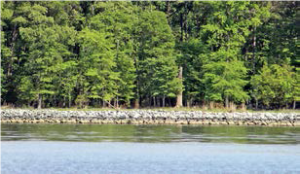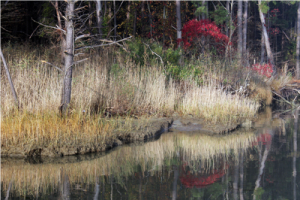Managers and policy makers concerned about shoreline hardening in the Mid-Atlantic region can now find pertinent research results summarized in an accessible document. NCCOS supported a multi-partner project conducted from 2009 to 2015 to investigate the ecological effects of hardened shorelines, watershed development and invasive marsh grass species on nearshore ecosystems. The NOAA Chesapeake Bay Office worked with NCCOS and the project researchers to develop a research summary that highlights the major findings from this extensive project.

Scientists sampled animals and plants in shallow estuarine waters at more than 500 sites in Chesapeake Bay sub-estuaries and the Maryland and Delaware Coastal Bays. The project results show that shoreline hardening affects many important nearshore habitats and species. In general, shoreline hardening negatively impacts many fish, shellfish, bird, and plant species in nearshore waters.

Results vary based on development in the watershed and may differ along the North-South axis of the Bay. Natural shoreline habitats (marsh and beach) generally showed higher abundance, biomass, and diversity of benthic invertebrates and fish than riprap and bulkhead shorelines. Invasion of marshes by the common reed Phragmites was positively associated with riprap shorelines, whileinvasion was less severe in areas with more natural shorelines.
Agencies will use these results to manage shoreline development and show cumulative negative effects of many small instances of shoreline hardening. As an alternative to hardened shorelines, living shorelines are an option for shoreline stabilization. Living shorelines consist of mostly natural material that provides habitat value and benefits the nearshore ecosystem.
NOAA has issued Guidance for Considering the Use of Living Shorelines to help managers and planners understand the benefits and techniques of living shoreline stabilization.
For more information, contact Beth Turner.
